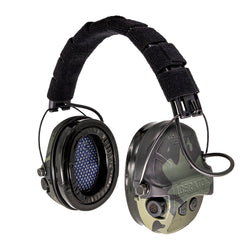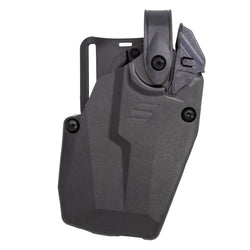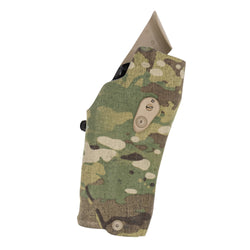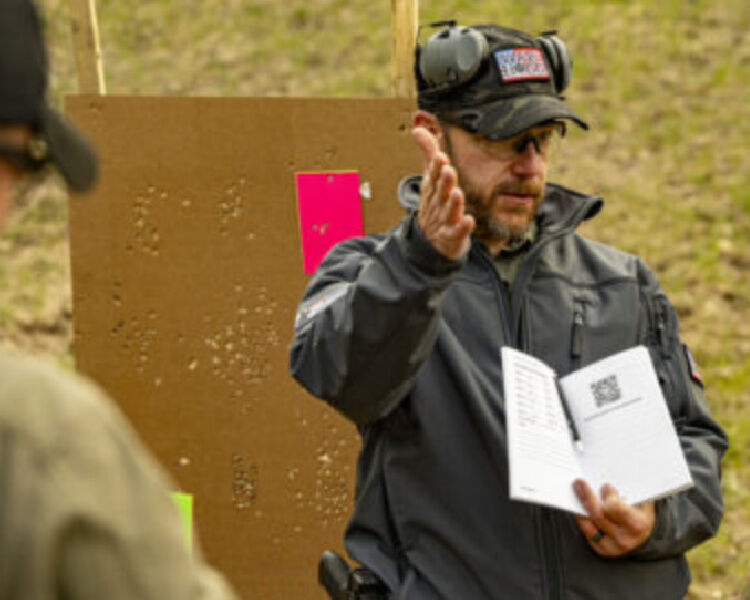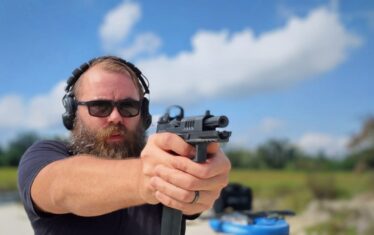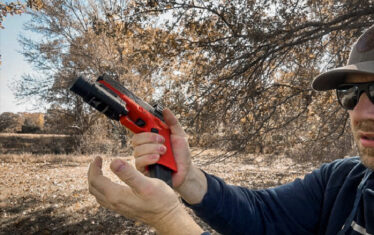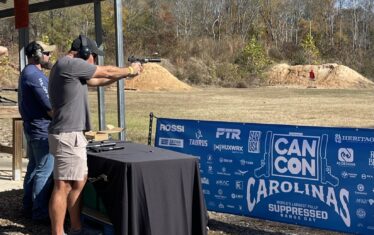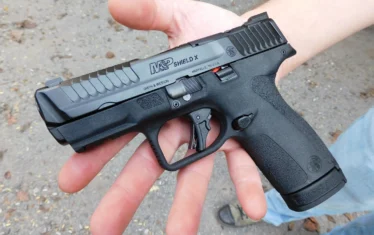Ask yourself this question, “Do I have a marksmanship plan for my next range session?” For most people, the answer is no. We have a plan when we go to the gym, but why not a plan to enhance our ability to defend ourselves or our family?
I’m a firm believer that if you don’t write your goals down, they are just dreams that can change at a whim. That’s where the Firearms Training Notebook comes in.
The Firearms Training Notebook
The Firearms Training Notebook: 1% Better Everyday was developed as a tool for law enforcement officers to better enhance their survivability if they were ever involved in a deadly force encounter. However, its application carries over to both military and civilian shooters.
The book is a collaboration between myself, Rick Hogg of War HOGG Tactical, and Mark Kelley of Kelley Defense. We had been using notebooks for years to track our progress and saw a lack of record-keeping in our civilian, military, and law enforcement students. As an example, some of my K9 law enforcement officers keep great records for their dog training, but have zero records for their personal marksmanship abilities.
I ask a lot of students to tell me their draw-to-first-shot time on an ISPC target “A” zone hit from 7 meters. The answer: “I don’t know but I’m fast!” How can you make any improvement to your marksmanship skills if you don’t have any idea what your time is or where you are struggling?
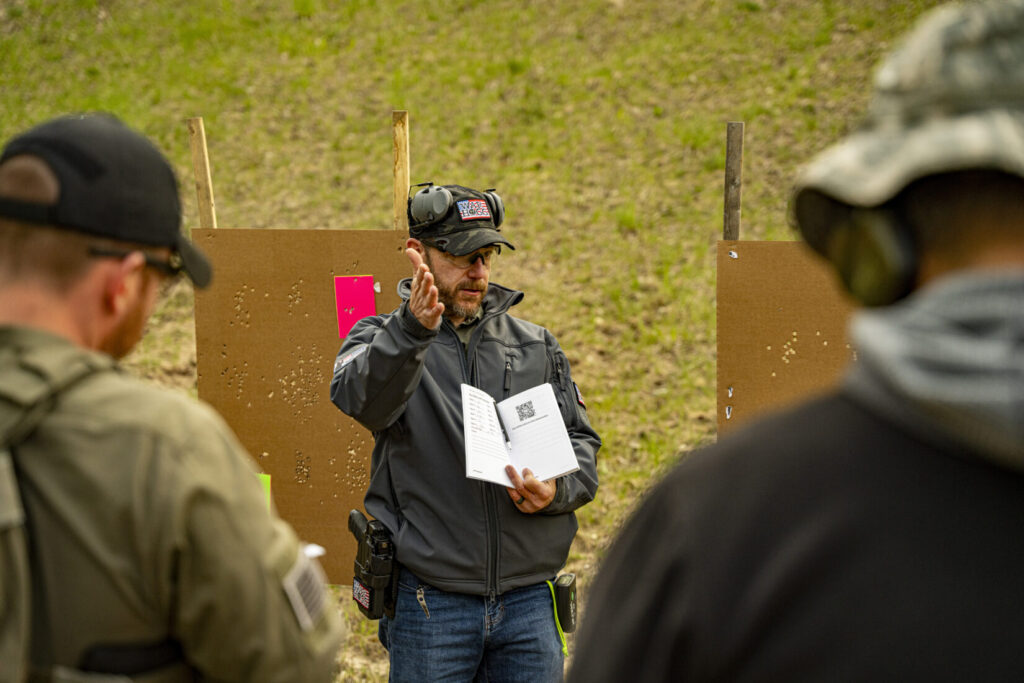
We asked around and did our research, ultimately finding that self-publishing via Amazon would be the best way to go. We learned after the first batch that we had forgotten page numbers, but it was an easy fix seeing how Amazon is a print-on-demand service.
One thing Amazon does not offer is a spiral-bound option. So earlier this year we had a presale of spiral-bound copies of The Firearms Training Notebooks. We will occasionally offer the spiral-bound notebook throughout the year.
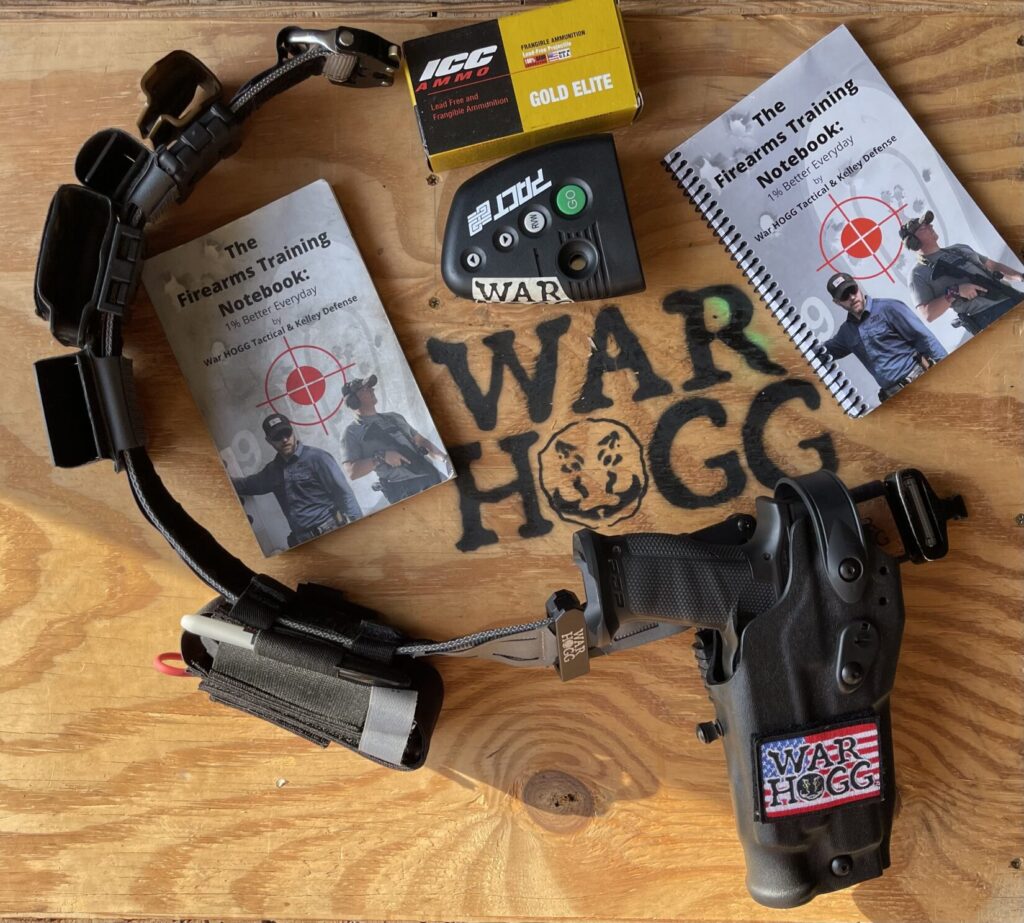
Breakdown of The Firearms Training Notebook
The notebook is comprised of the following:
- Four Rules of Firearms Safety
- About the Authors
- Shooting Goals
- War HOGG Self Eval with Follow Ups
- Training Section
- Self Eval Follow Ups,
- Design Your Own Drills
- Printable Targets
Eddie Gallagher, a guest on On The Range Podcast with War HOGG Tactical and Kelley Defense, mentioned using QR codes in his book. Inspired by his great idea, we added QR codes to the notebook. These codes link to YouTube videos on topics like how to use the notebook, using a PACT Club Timer III, training tips videos, our OTR Patreon “CREW” page, War HOGG self-eval, shooting drill videos, and more.
Using The Notebook
A QR code under the Table of Contents links to a “Notebook Instructional Video” on YouTube where I talk about how to use the notebook. The key point is to use the notebook to plan both your live and dry fire marksmanship training.
The beauty of the notebook is there is no right or wrong way to use it. We learn things all the time from our students and how they are using the notebook. It’s designed for both pistol and rifle, but we have even seen some people use it as a sniper DOPE book.
We wanted to use the War HOGG Self Eval as a benchmark that shooters could use to gauge their progress. Some people would call the Self Eval a cold drill or warm-up drill. We like to call it Performance on Demand! During a gunfight, there is no warm-up, it’s straight Performance on Demand, and either you have it or you don’t.
You can use whatever eval you want, and change variables or distance. The key is having something that is easily repeatable to set up. If you place a couple of 3×5 and 4×6 cards in your notebook, you always have a War HOGG Self Eval with you.
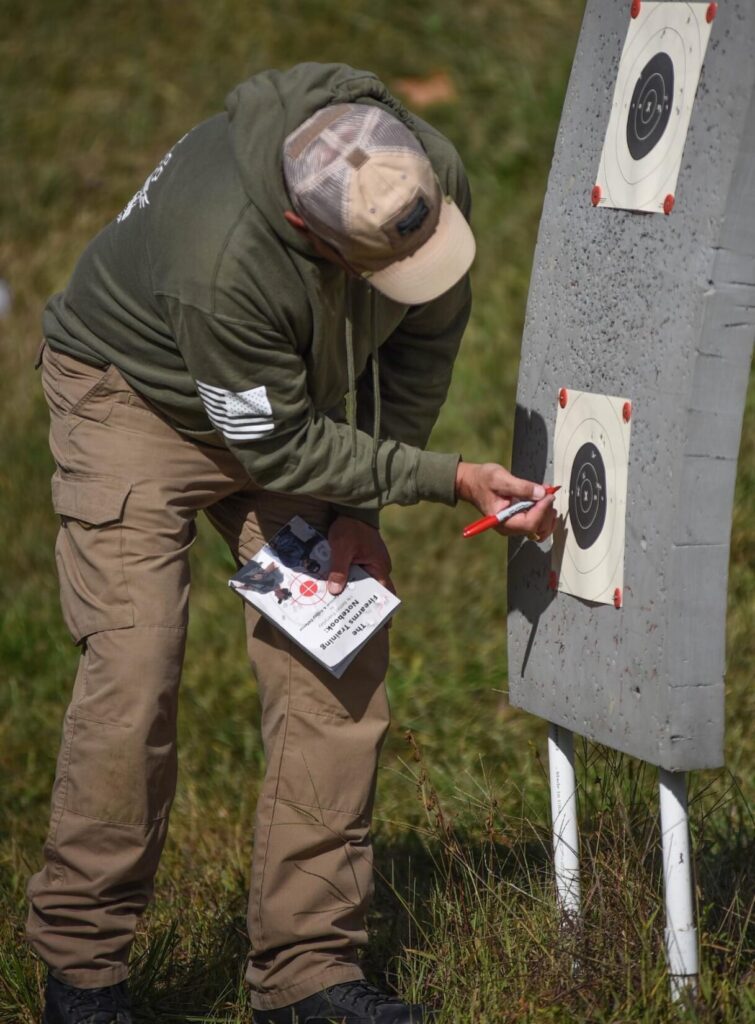
One key component is the ability to record your “data.” We use the word “data” instead of “time” because too many people chase time without understanding how to make incremental improvements.
I was also guilty of it. When I first started using the War HOGG Self Eval in my courses, I only gave my students an overall time. The problem is the eval gives you 12 units of data. With that data, the shooter can see exactly where they need to improve.
Other Supplies
A PACT club timer III is our go-to timer for capturing data. So much so, we have six timers at our courses. We hand timers off to our students so they can collect their data and become more proficient with the timer.
Shooters also use their phones to record themselves. And just like in sports, they review the tape. The phone can also make their range sessions more efficient by just repeating the data to their phones. When they are reviewing their range session they can annotate their data in their notebooks.
The Heart of the notebook: The Training Section
Each page of the training section has a Dry / Live Fire spot to circle what training you are conducting. Most of your time should be spent on dry fire training. The range is to confirm my marksmanship and make sure I am mitigating my recoil.
Underneath that, you have a date, time, weather, and range location section, but for me, the distance and target are must-have pieces of information. Why is this so important? Because it puts your data into perspective.
A prime example: during our courses we have the students refer to their data from the Self Eval. The problem is the data from the Self Eval is on either a 3×5 or 4×6 card verses a 3-inch dot so the time might be greater, but the target was smaller.
Almost every drill we shoot during a War HOGG training course provides the students with some type of data for their book. This is important so the student has a reference when they go home to start their own training program. They know exactly what areas to focus on.
At the center of each page in the training section, a blank table of six boxes across and six boxes down comprises the heart of the notebook for data collection.
The flexibility here is up to the shooter’s imagination. For example, in my book a small “m” near the time indicates to me a miss. I use plus and minus signs when I am dry firing to indicate if I did or didn’t complete the drill in the allotted time.
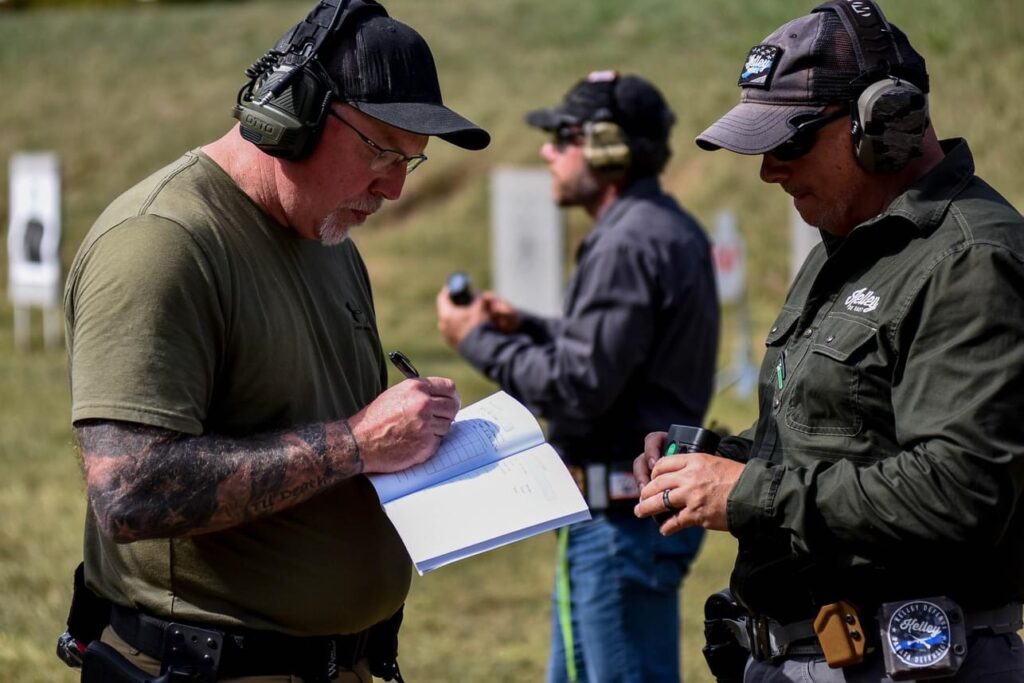
A notes section is at the bottom of the training page. This is a place to refer to for both good and bad things you discover during your training session. A lot of people overlook this section, but it’s an important part of the range plan. At least, it is for me. If I don’t write it down, I will forget the good and bad of that range session. Plus, it gives me a great reference to add to that training page for my next session.
Write it down!
Design Your Own Drill
In the final section of the notebook, shooters can design their own drills, depending on what skill they are looking to improve. There are 10 pages with space for the drill name, round count, score time, and course description. A blank table at the center of the page allows shooters to record their data.
I used this section for a video shoot with Panteao Productions and Grizzly Targets Shoot no Shoot (SNS) turning target system. I had all 10 drills prepared in advance, and referring to my notebook made setup easy and ensured repeatability for my next range session.
A QR code in this section takes you to the War HOGG “V” drill, so shooters have a reference.
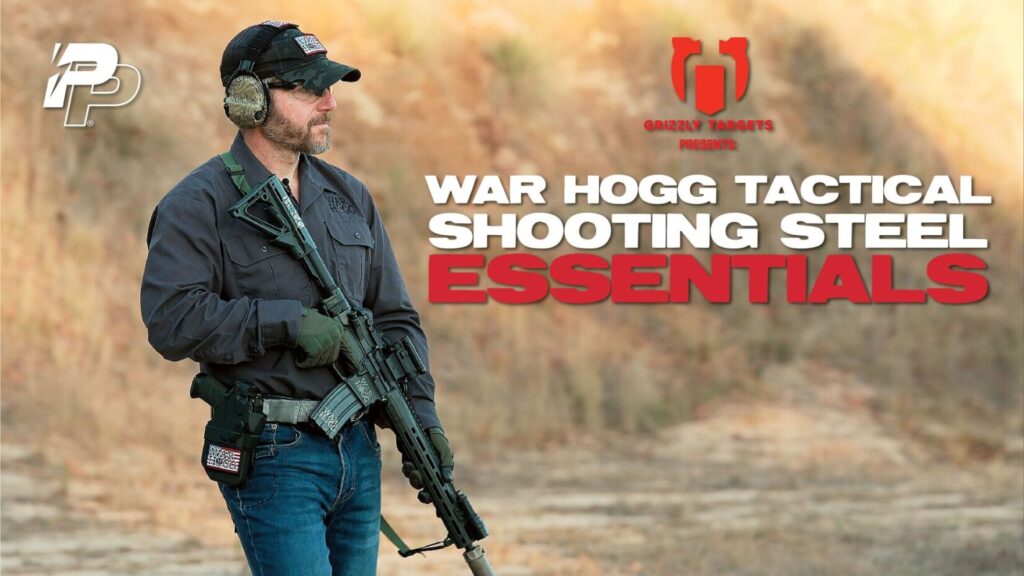
Final Thoughts
The next time you are going to the range or conducting your dry fire training, have a plan. A plan for your firearms training and capturing that performance is the only way to make any improvement. Record your data and see those problem areas in your marksmanship program. Then, work on those skills to Be 1% Better Everyday!
Train Hard, Stay Safe, and see you “On The Range.” – Rick


